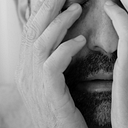Creating Art: Nature vs. Nurture
My sister’s photography and our in vivo experiment in genetics.
My sister Gabrielle is eight years older than me, although she sometimes refers to us as “twins.” I’d like to believe this is less about how youthful she presents, and mostly due to the fact that we have inexplicably similar sensibilities about our artwork.
I can’t tell you how often I’ll write something and then she’ll show me a comparable essay of hers from a decade earlier. Or I’ll take a photo and she’ll have almost the same photo on her roll. We seem to notice the same sorts of things. What is this? It can be comical.
It’s got to be nurture. We both recognize a lot of influence as having come from Jerry Uelsmann in our overlapping childhoods. Our joy in juxtapositions, our focus on play and constraints, the attraction to visual clutter. This external nurturing was combined with our parents’ encouraging of our creative explorations. Mom launched a creativity program for kids in Gainesville (the “GACA”) in 1967 — still a going concern 50-plus years later. Whatever the specific source, my mom’s three kids have all been able to foster careers that were essentially creative.
Around 1998 Gabrielle began a series of photo collages — different from mine, different from Uelsmann. She takes snapshots willy-nilly, and then, like Uelsmann, sits with piles of them and looks for visual parallels. She plays games with them to amuse herself. She sets rules and sees what can happen inside that frame. In this game, she selects images (never multiples from the same location), cuts them (generally only straight-line cuts) — and assembles them (rarely more than three elements combined).
Even with everything available, her prints make up the majority of framed photos in my parent’s home.
While the elder Rubin siblings seem to keep more private about their lives, it apparently falls to the youngest to articulate my excitement in their work. Here’s some classic compositions, my faves, by Gabrielle.
We got a chance to talk about her process on the podcast last year — “Everyday Photography, Every Day.”
Her newest work involves sewing together negatives…
Keep up with Gabrielle at her website: www.Gabzart.com
If you enjoyed this, you might also enjoy:
For more Rubin tales, follow me on Medium. My photographic portfolio is at www.byRubin.com or on Instagram
